Northeast Wilderness Trust

Rewilding the Northeast
Investing in one of Earth’s most crucial forested regions
 Howland Research Forest, Maine Zack Porter
Howland Research Forest, Maine Zack Porter


Investing in one of Earth’s most crucial forested regions
 Howland Research Forest, Maine Zack Porter
Howland Research Forest, Maine Zack Porter
A hundred years hence, a vast region cloaked in green, rivaling any temperate forest on Earth for beauty and wildness. Towering pines stretch 125 feet into the sky. In spring, waves of warblers sing in the canopy of majestic old forest. Great schools of salmon and shad again roil the water of free-flowing rivers. Cougars and wolves have come home, keeping the deer populations healthy. Moose dominate the wet corners of the landscape. Bountiful farmlands, well-managed timberlands, and expansive wilderness areas allow all the region’s creatures freedom to pursue lives of quality. A beautiful, durable human civilization flourishes within nature’s abundance.
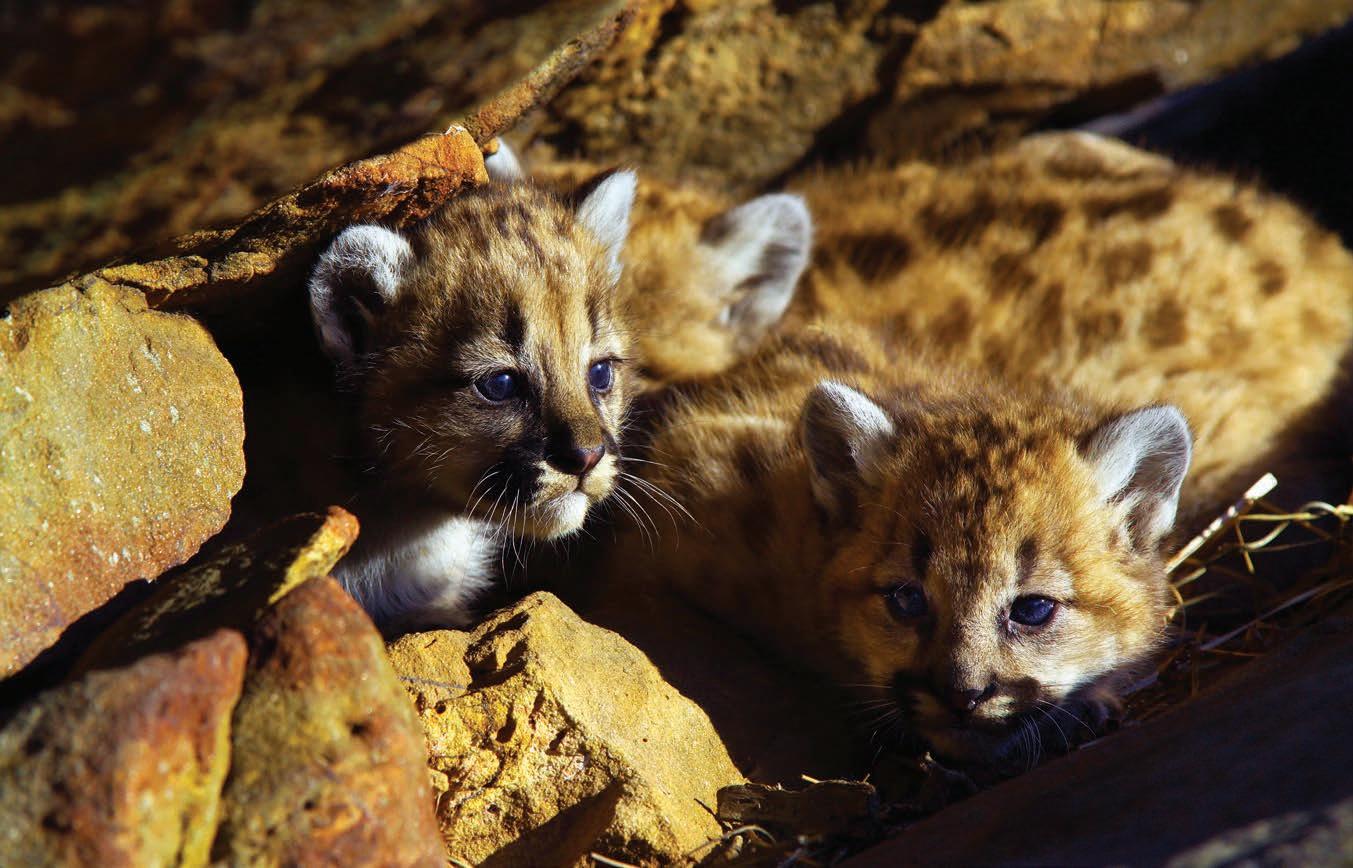 Cougar kittens ©Susan C. Morse
Cougar kittens ©Susan C. Morse
We’re different. Our region’s only land trust devoted exclusively to rewilding, we help nature heal by protecting wilderness areas— places where natural processes direct the ebb and flow of life. Relentlessly focused on results, every place we safeguard is a future old-growth forest . . .
Without logging or intensive recreation.
With beauty and quiet.
Without threat of future development.
With a promise that our wild cousins in the community of life will be free to pursue happiness and raise their families.
“
Across the woodland bogs, high alpine granite, and long, unrolling forests of the region, Northeast Wilderness Trust is restoring wildness and sequestering carbon—essential steps for protecting the health of the planet and the spirit of humankind.
Bill McKibben

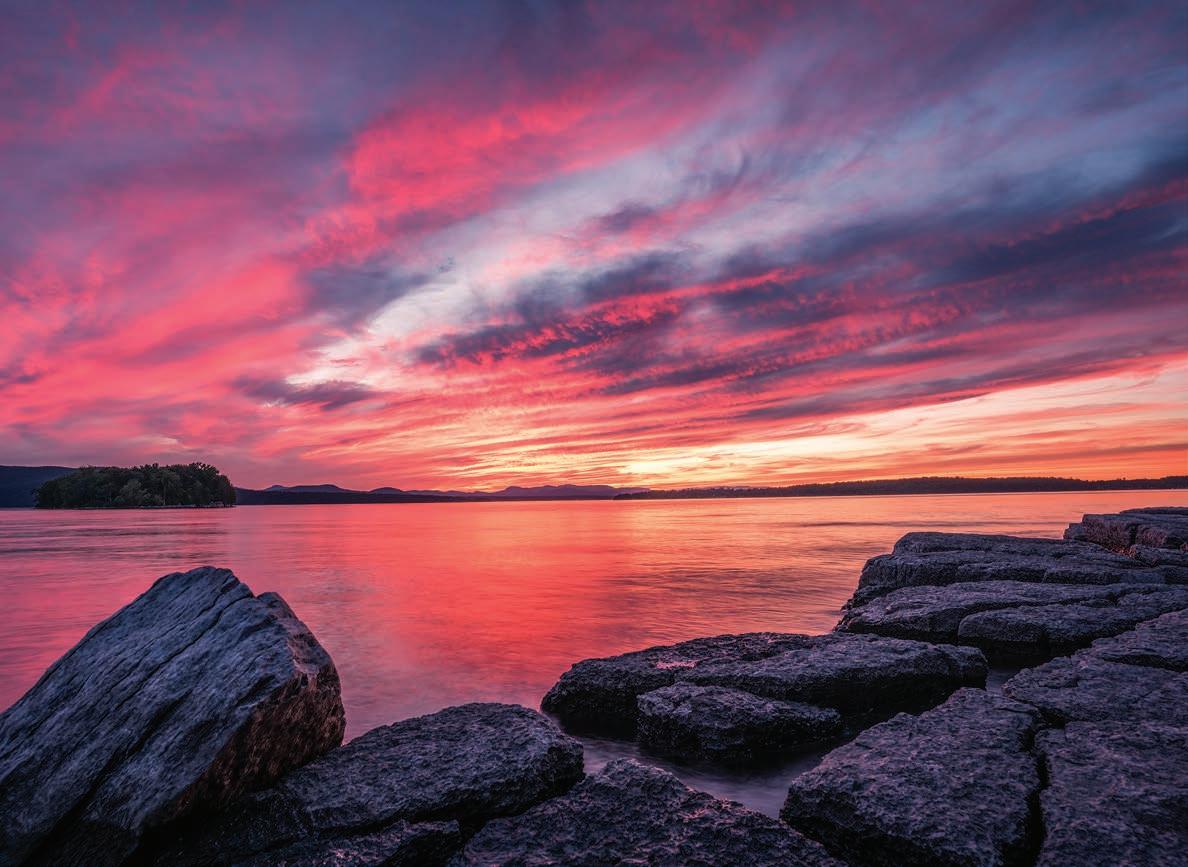
This little blue and green planet has had billions of years of practice producing beauty and diversity—in the seas and sky and on the land. It’s been dramatic, with continental plates crashing together, oceans expanding and receding, and life undergoing periods of rapid flowering and occasional contractions.
The architect of all this wonder is wild nature: Natural processes playing out over stretches of time too vast for the human mind to grasp, in which even rock is alive, formed and reformed from ancient stardust, forging great chains of mountains that rise and fall over the ages.
Brendan WiltseThere is no other creative force in the cosmos with such a proven track record. And so, when faced with the overarching challenge of our time—an intertwined crisis of collapsing biodiversity,1 climate chaos, and declining social conditions for Earth’s human inhabitants—one would think that governments and business leaders would look first to nature for solutions. Unfortunately, when attention is paid to the crises before us, most people seem to focus on symptoms, not root causes, and are distracted by whatever shiny new technology or policy promises to ameliorate the most prominent current example of an unraveling world.
 Woodbury Mountain Wilderness Preserve, Vermont Shelby Perry
Woodbury Mountain Wilderness Preserve, Vermont Shelby Perry
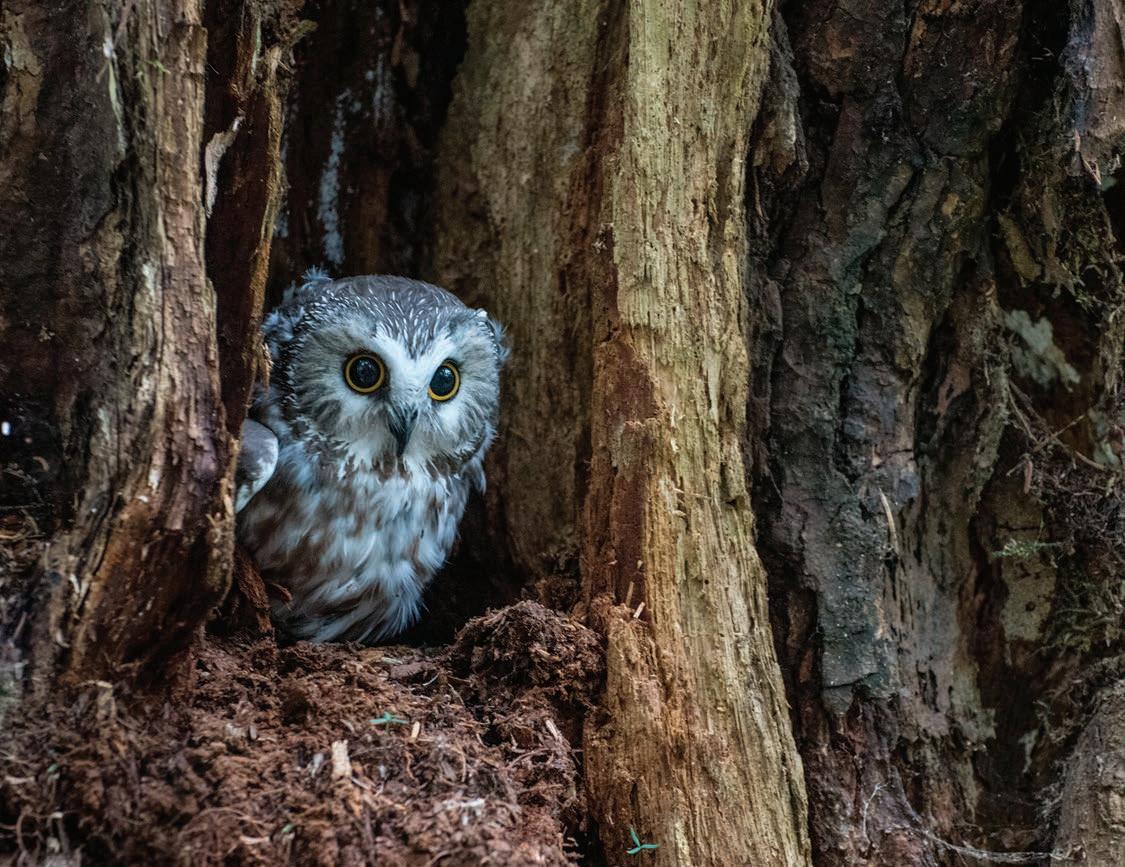
One path to a more equitable and vibrant future, however, is clear. Safeguarding nature by permanently protecting wild lands and waters is the most direct, tangible way for people who care about life’s diversity and who fear for future generations to act. And to see immediate returns on that action in the form of habitat that will grow wilder, more complex,2 hold more carbon, and produce more secure homelands for wildlife while also helping human communities thrive.
Saw-whet Owl David MiddletonWhile there are exciting opportunities for wilderness recovery around the Earth, the temperate forests of the northeastern United States are a globally important setting for rewilding. Such investments are cost effective, durable, and will generate compounding returns far into the future.
Rewilding can’t solve every ecological and social problem. But alongside regenerative agriculture, energy transition, economic reform, and efforts to reduce humanity’s ecological footprint, rewilding is crucial producing an array of benefits, for wildlife, natural communities, climate, and people.
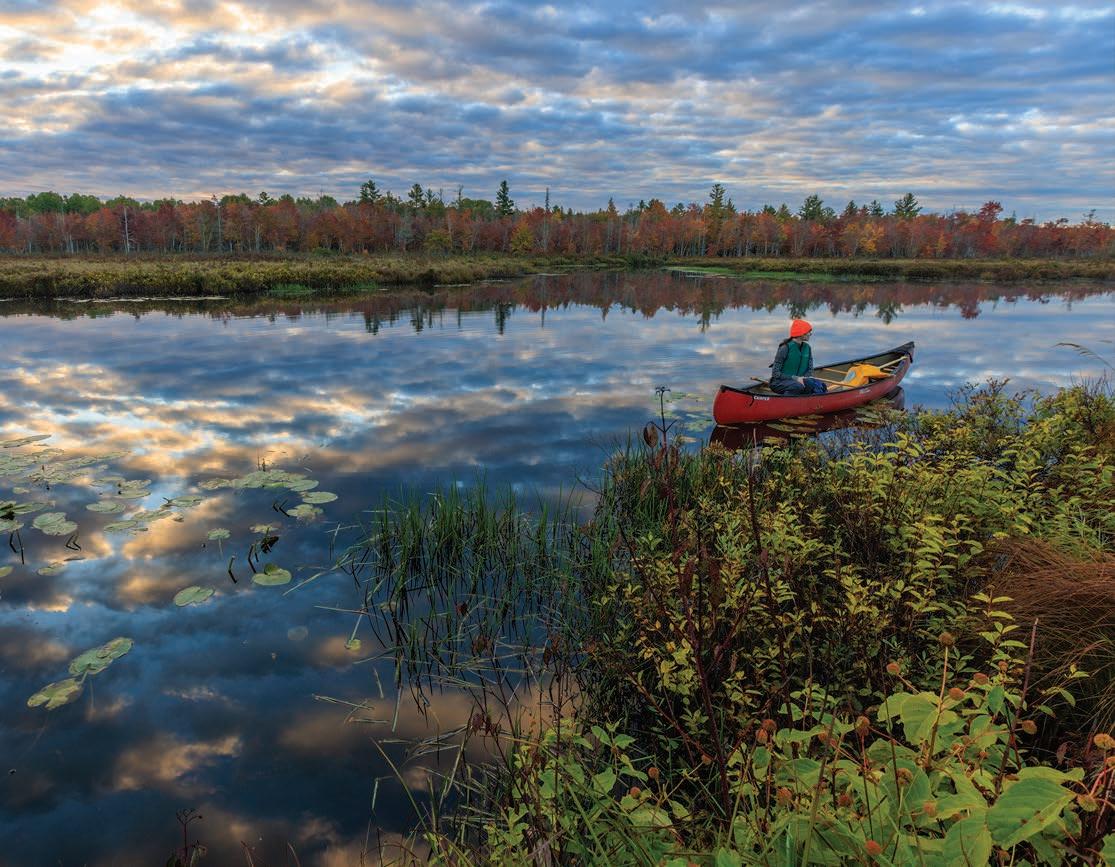 Alder Stream Wilderness Preserve, Maine Jerry Monkman
Alder Stream Wilderness Preserve, Maine Jerry Monkman
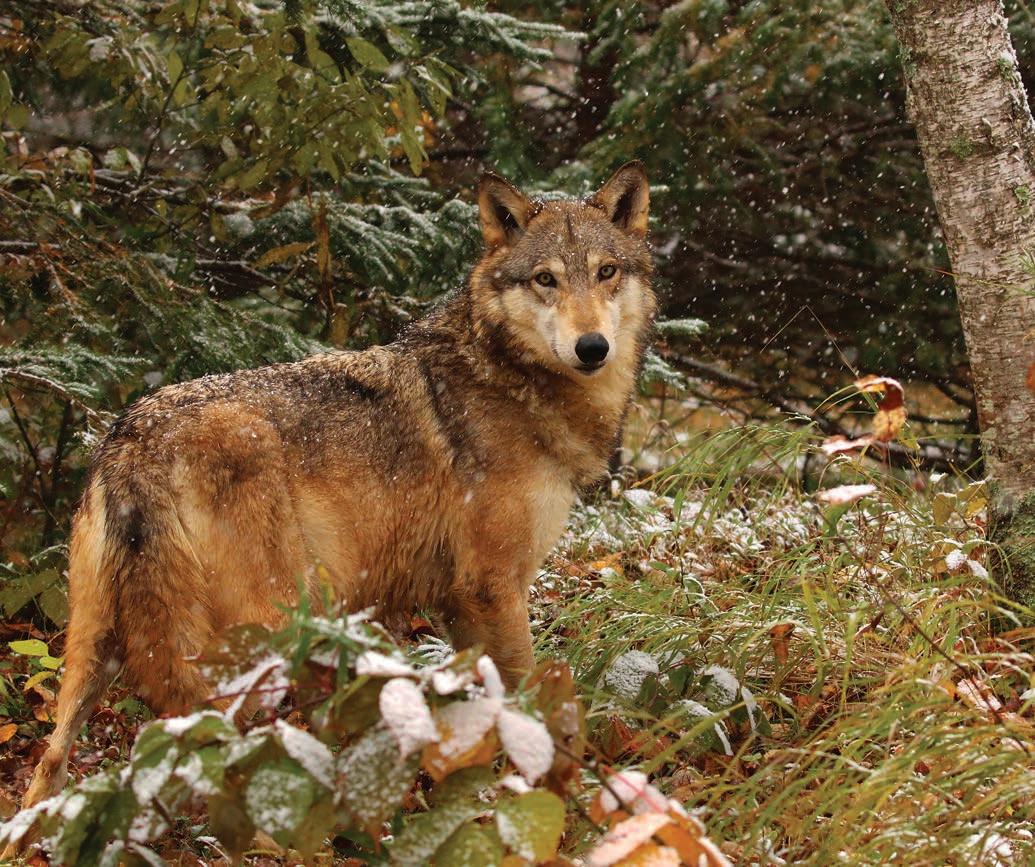
When conservationist Dave Foreman coined the word “rewilding” he used the term as poetic shorthand for large-scale wilderness recovery 3 that would allow keystone species such as wolves, cougars, and sharks to maintain healthy populations throughout their native ranges and thus restore intact food webs.
In the decades since, nature lovers everywhere have embraced the term, using it to describe conservation initiatives from backyard pollinator gardens to international habitat corridors that give wide-ranging wildlife room to roam and ecosystems space to adapt to a changing climate.
Eastern Canadian timber wolf ©Susan C. MorseThe Global Charter for Rewilding the Earth4 defines the term this way:
Rewilding means helping nature heal. Rewilding means giving space back to wildlife and returning wildlife back to the land, as well as to the seas. Rewilding means the mass recovery of ecosystems and the life-supporting functions they provide. Rewilding means restoring and protecting specific places—on land and in the ocean—where nature is free to direct the ebb and flow of life. Rewilding is about allowing natural processes to shape whole ecosystems so that they work in all their colorful complexity to give life to the land and the seas . . .
. . . Rewilding is also about the way we think. It is about understanding that we are one species among many, bound together in an intricate web of life that ties us to the atmosphere, the weather, the tide, the soils, the freshwater, the oceans, and all living creatures on the planet.
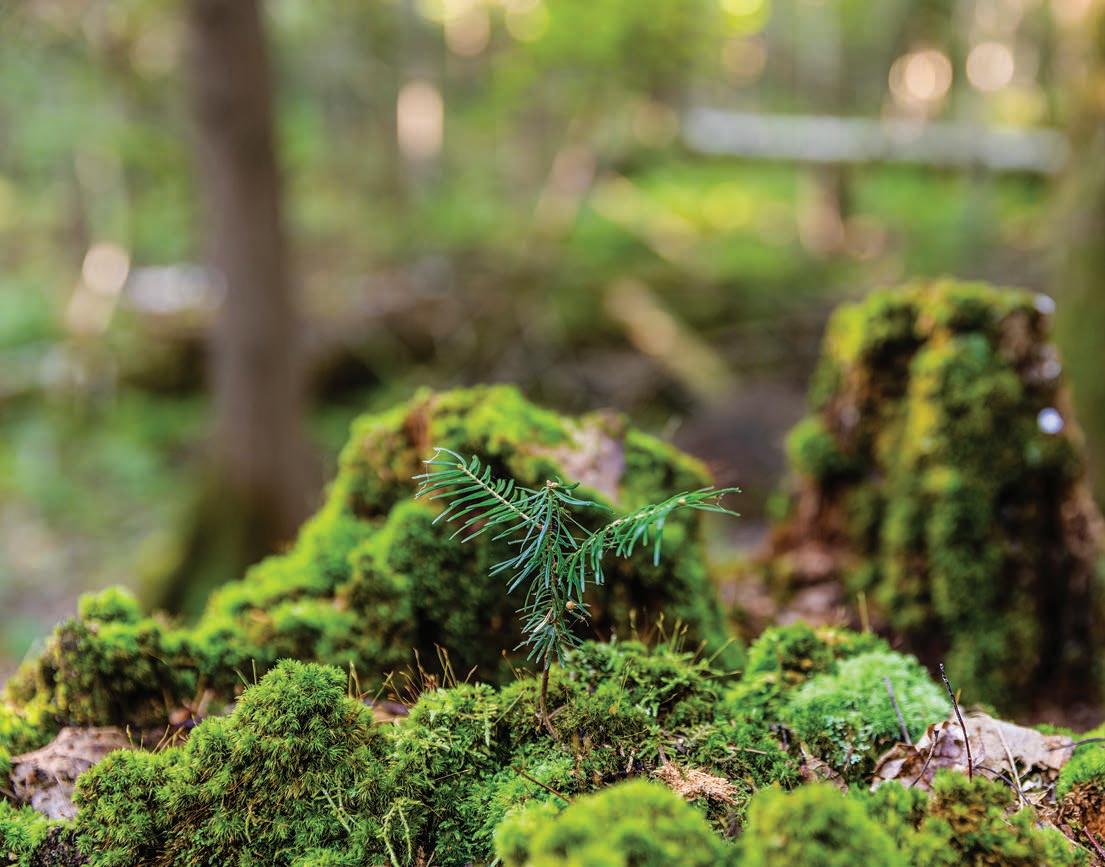 Blue Mountain Wilderness Sanctuary, Vermont Jerry Monkman
Blue Mountain Wilderness Sanctuary, Vermont Jerry Monkman
The foundation of rewilding is protected areas places where natural processes play out freely, acting as the “arena of evolution” while also providing the life-giving attributes of clean air, water, a stable climate, fertile soil, etc.
Wild places + wild processes = more wild life. Where key native species are missing due to past human intervention, we have the opportunity to help those species return home.
To rewild the Earth we must also rewild ourselves—capturing the hearts and minds of people with a hopeful, positive vision. Instead of focusing on what’s wrong, we imagine a world where nature’s healing powers have been unleashed.
 Atlantic salmon Gregg Parsons
Atlantic salmon Gregg Parsons

In the wilderness it is possible to sense most keenly our membership in the whole community of life on the Earth . . . We deeply need the humility to know ourselves as the dependent members of a great community of life . . . to know the wilderness is to know a profound humility, to recognize one’s littleness, to sense dependence and interdependence, indebtedness, and responsibility.
Polly Napiryuk Andrews5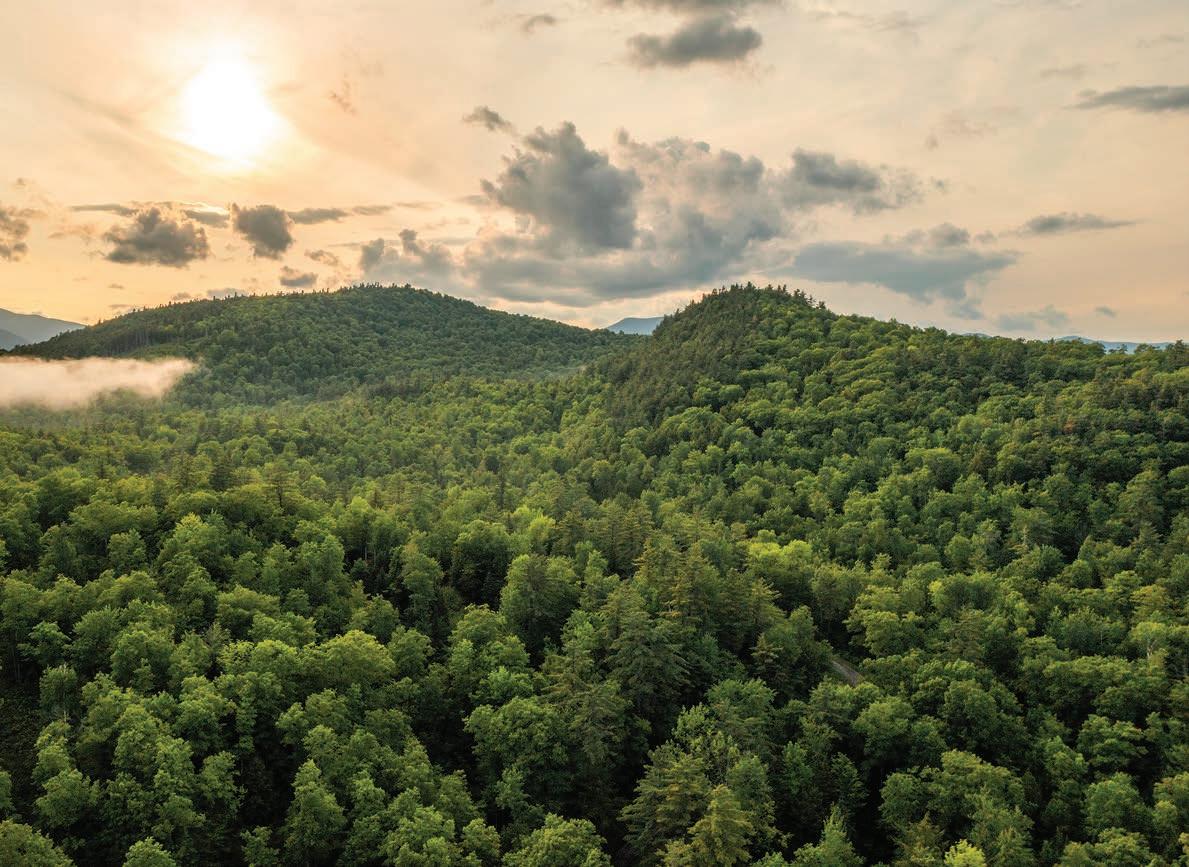
Sometimes a region’s public perception is misleading. Say “New York” and folks from away imagine Times Square, not the 6-million-acre Adirondack Park, the largest protected area in the Lower 48 and a preeminent historical example of large-scale rewilding.
The Adirondack Park includes nearly 3 million acres of publicly owned forest land that is constitutionally protected as “forever wild.” The park holds the biggest tract of old-growth forest and some of the lowest human population density in the East.
Moriah Wilderness Preserve, New York Stephen MatterStill, rewilding opportunities abound, in the Adirondacks and across New England.
In northern Maine, a vast territory of remote forest managed as industrial timberlands has extraordinary rewilding potential. Maine has more than 10 million acres with few human residents, some 6,000 lakes and ponds, 4,000+ miles of canoeable rivers, and the largest population of moose in the contiguous United States.
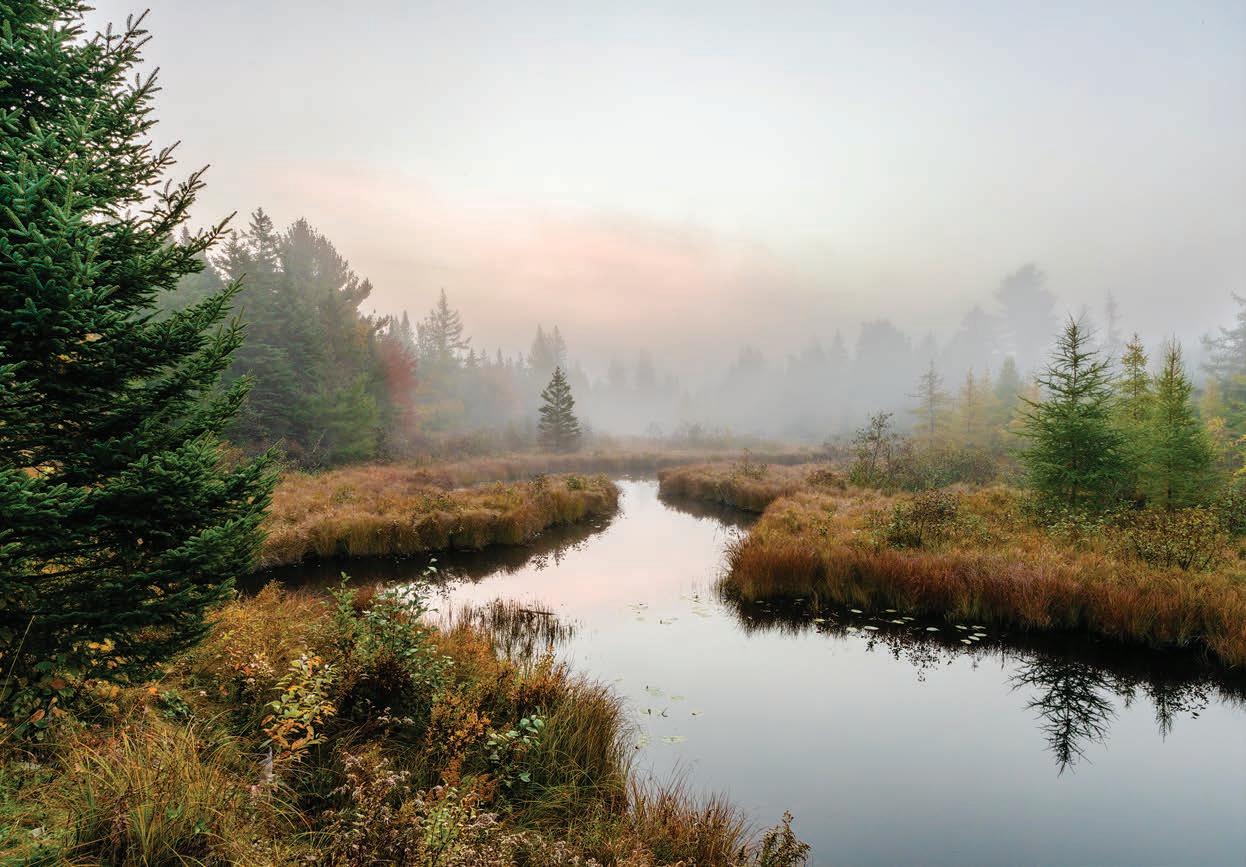 Frenchman Bay Community Forest Easement, Maine Jerry Monkman
Frenchman Bay Community Forest Easement, Maine Jerry Monkman

The northeastern temperate forest is part of the Atlantic Flyway and contains the largest identified Important Bird Area of global significance in the contiguous United States, a habitat that is home to dozens of woodland songbird species.
This region offers the last climate stronghold for brook trout in their native range in the U.S.
This region sustains the second most carbon-dense forest in the Lower 48.
Yellow Warbler Stephen MatterAdditional wilderness and wildlife conservation in the Northeast is crucial—and complements biodiversity protection elsewhere around the planet. Moreover, the foundations of wilderness and wildlife conservation were laid here. The laws, policies, and cultural norms that support conservation stretch back more than 150 years, and a strong case can be made that conservation investments in the northern forest region of North America will be as durable as anywhere on Earth—a key consideration in a future that may be increasingly chaotic ecologically and politically.
 Bear’s Nest Wilderness Preserve, Vermont Jerry Monkman
Bear’s Nest Wilderness Preserve, Vermont Jerry Monkman
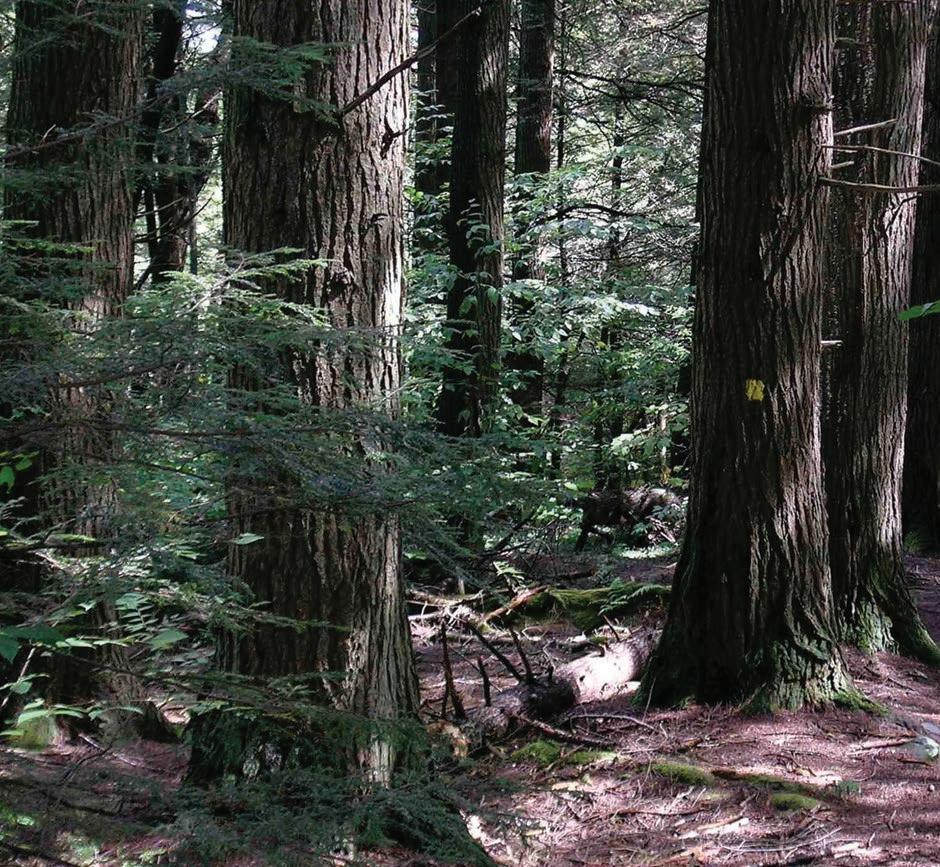
Peer-reviewed science illuminates the value of wildlands conservation in the globally significant Northern Forest region: This region contains part of the most intact temperate forest on the planet, with high climate resilience. That forest is identified as part of the Global Safety Net,6 the system of priority conservation lands that if protected can help slow the extinction and climate crises.
Older, wilder forests store more carbon7 than younger, managed forests and will continue sequestering carbon for centuries.
Conserving existing forests in the Northeast and allowing them to grow old8 (rather than be repeatedly logged) is the most cost-effective strategy for protecting regional biodiversity and increasing natural carbon storage.
Rewilding forests gain structural complexity,9 leading to enhanced resilience over time. There is a simple solution to helping mitigate climate chaos and stem the biodiversity crisis: More wilderness.
Old-growth hemlocks Shelby PerryFor the climate. Old and unmanaged forests store massive amounts of carbon. Nature has been perfecting this type of carbon-capture technology for millions of years!
For wildlife. Wilderness areas excel at providing habitat for shy and sensitive species.
For quiet. Wilderness offers quiet respite and spiritual rejuvenation in an increasingly chaotic world.
For evolution. Forever-wild lands provide the setting for natural processes to create biodiversity and build ecological resilience.
For equity. Earth’s diversity encompasses millions of species all bound together in a single, cohesive whole. Protecting wilderness areas is an act of humility and respect for all life.
For people. Clean air and water, fertile soil, a stable climate— the conditions supporting a flourishing humanity and healthy biosphere are inextricably connected.
For itself. Wild places and creatures have intrinsic worth; they do not need us to value them to be valuable.
 Snapping turtle David Middleton
Snapping turtle David Middleton

We protect nature for nature’s sake.
Yes, that is also wildly beneficial for people, but we approach our work with the core belief that humans are one species of many. The habitat safeguarded by Northeast Wilderness Trust is home to our wild cousins in the community of life: Bears and bobcats, slimemolds and shrubs, warblers and wildflowers. We believe that people should honor other creatures’ right to freedom and habitat.
Founded more than two decades ago, the Wilderness Trust is passionately committed to its distinctive mission of helping rewild the Northeast. We do this by conserving wilderness areas that will remain off limits to logging, other forms of resource extraction, and intensive recreation. Giving wild nature freedom to create beauty and biodiversity is our polestar.
American marten David MiddletonWe are nimble and effective.
Melding the spirit of a start-up and capacity of a maturing organization, Northeast Wilderness Trust prides itself on its ability to act quickly to deliver on-the-ground results.
One of only a few land trusts in the nation focused exclusively on forever-wild conservation, Northeast Wilderness Trust has been highly successful attracting new supporters to this vital mission. We now safeguard more than 80,000 acres in Northeast Wilderness Trust-owned preserves and conservation easement properties.
Since 2017 our staff and organizational pace of wilderness protection have grown four-fold. Having met our strategic plan acreage goals three years early, in 2022 we set a new goal—to protect an additional 100,000 acres by 2030 as our contribution to global 30X30 conservation efforts.
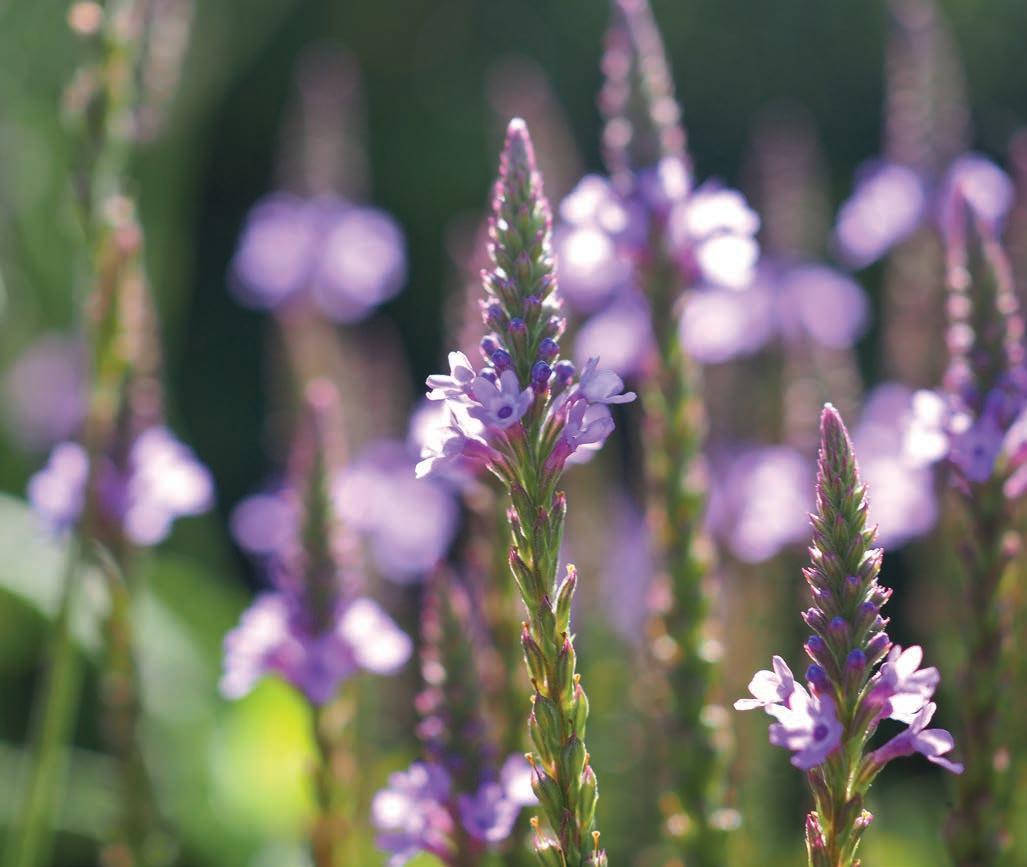 Blue vervain Shelby Perry
Blue vervain Shelby Perry
Championing the idea of wilderness is central to our vision, too. In 2023, Northeast Wilderness Trust co-published, along with Harvard Forest and Highstead, Wildlands in New England, 10 the first U.S. study to map and characterize all permanently conserved lands in one region that are managed to be forever wild. The report serves as a call to action to protect at least 10 percent of the region as forever wild. At present, less than four percent of New England enjoys that highest level of conservation status.
 Whalesback Conservation Easements, Maine Mike Perlman
Whalesback Conservation Easements, Maine Mike Perlman

“
To be whole. To be complete. Wildness reminds us what it means to be human, what we are connected to rather than what we are separate from.
Terry Tempest WilliamsWe believe that the way to a brighter future for all life includes more permanently protected habitat. It’s not complicated.
Protecting wild nature is a cost-effective and scalable way to mitigate the climate crisis, sustain biodiversity, and support human well-being. Rewilding the Northeast is a crucial part of this global vision: a thriving human civilization embedded in a beautiful, wild world offering freedom and habitat for all.
Will you join us?
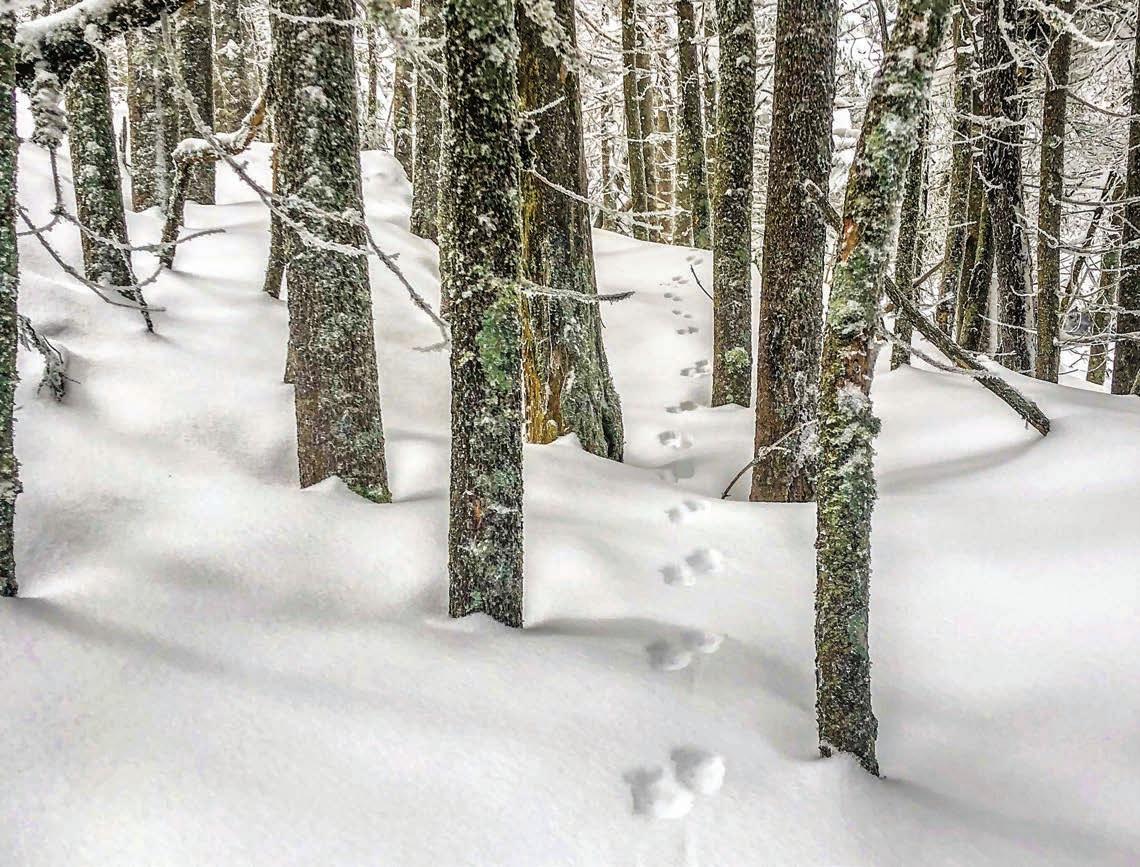 Fisher tracks
Tyler Socash
Fisher tracks
Tyler Socash
1. Eileen Crist, 2022. Witnessing Mass Extinction. https://eileencrist. com/images/pdf/Crist_Witnessing-Mass-Extinction_2022.pdf
2. Edward K. Faison et al., 2023. Adaptation and mitigation capacity of wildland forests in the northeastern United States. https:// highstead.net/wp-content/uploads/2023/09/Faison-Adaptationand-Mitigation.pdf
3. Dave Foreman, 2004. Rewilding North America. https://islandpress. org/books/rewilding-north-america
4. Global Charter for Rewilding the Earth, 11th World Wilderness Congress (WILD11, Resolutions Committee, March 2020); www.wild11.org/charter
5. Polly Napiryuk Andrews, 2021. Wilderness and traditional Indigenous beliefs: A Cup’ik Perspective. https://alaskawild.org/ blog/wilderness-and-traditional-indigenous-beliefs/
6. Eric Dinerstein et al., 2020. A “Global Safety Net” to reverse biodiversity loss and stabilize Earth’s climate. https://advances. sciencemag.org/content/6/36/eabb2824
7. Mark Anderson, 2021. Wild Carbon: A Synthesis of Recent Findings on Carbon Storage in Old Forests. https://ijw.org/wild-carbonstorage-in-old-forests/#:~:text=Recent%20peer%2Dreviewed%20 science%20has,thus%20acting%20as%20carbon%20sinks
8. William Moomaw et al., 2019. Intact Forests in the United States: Proforestation Mitigates Climate Change and Serves the Greatest Good. https://www.frontiersin.org/articles/10.3389/ffgc.2019.00027/full
9. Faison et al.
10. David Foster et al., 2023. Wildlands in New England. https:// wildlandsandwoodlands.org/resources/wildlands-in-new-england/
www.newildernesstrust.org
info@newildernesstrust.org
802.224.1000
17 State Street, Suite 302
Montpelier, VT 05602
View a short film on rewilding



Back cover: David Middleton Printed
Front cover: Frenchman Bay Community Forest Easement, Maine Jerry Monkman

In Wildness is the preservation of the world.
Henry David Thoreau